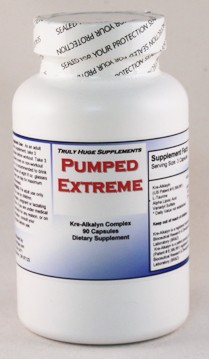
Click Here for Free Bodybuilding and Fitness Magazine Subscription
Creatine and Creatinine

Click Here For Creatinine Free Creatine
The Difference Between Creatine and Creatinine
There is a big difference between creatine and creatinine which is something that is used to measure any strain that the kidneys are going through in trying to process creatine. If you donít know already creatine is something that is naturally made by your body to form extra energy and repair muscle growth.
Creatinine is chiefly filtered out of the blood by the kidneys (glomerular filtration and proximal tubular secretion). There is little or no tubular reabsorption of creatinine. If the filtering of the kidney is deficient, creatinine blood levels rise. Therefore, creatinine levels in blood and urine may be used to calculate the creatinine clearance (CrCl), which reflects the glomerular filtration rate (GFR).
Serum creatinine known as a blood measurement which shows the current level of creatine in your blood, and as result is an important indicator of renal health because it is an easily-measured by-product of muscle metabolism. Creatinine itself is an important biomolecule because it is a major by-product of energy usage in muscle, which is used via a biological system involving creatine, phosphocreatine (also known as creatine phosphate), and adenosine triphosphate (ATP, the body's immediate energy supply).
Measuring serum creatinine is a simple test and it is the most commonly used indicator of renal function as mentioned above. Any rise in blood creatinine level is observed only with marked damage to functioning nephrons. Therefore, this test is unsuitable for detecting early-stage kidney disease.
One can get a better estimation of kidney function when looking at the creatinine clearance (CrCl) test. Creatinine clearance can be accurately calculated using serum creatinine concentration and some or all of the following variables: sex, age, weight and race, as suggested by the American Diabetes Association without a 24-hour urine collection.
There is also a way to check Creatinine concentration using a standard urine drug test. Normal creatinine levels indicate the test sample is undiluted, whereas low amounts of creatinine in the urine indicate either a manipulated test or low individual baseline creatinine levels. Test samples considered manipulated due to low creatinine are not tested, and the test is sometimes considered failed.
Diluted samples may not always be due to a conscious effort of subversion and diluted samples cannot be proved to be intentional, but are only assumed to be. Random urine creatinine levels have no standard reference ranges.
They are usually used with other tests to reference levels of other substances measured in the urine. Diuretics, such as coffee and tea, cause more frequent urination, thus potently decreasing creatinine levels. A decrease in muscle mass will also cause a lower reading of creatinine, as will pregnancy.
Creatine and Creatinine

